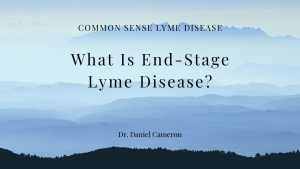Call for your appointment today 914-666-4665 | Mt. Kisco, New York

A young woman presented to the emergency department with multiple tick bites and erythematous papules, along with headaches, fatigue and arthralgias. She had been walking her dog in the woods in a state park in the metropolitan area of Washington, D.C.
She later found multiple ticks on her bedsheet and 30 ticks on her back, many of which had white spots on their backs.
“The most distinguishing feature of this patient’s ticks is the white spot on its back, which points to the [lone star tick] LST as the actual culprit,” the authors state.
The woman also “had red papules 2 to 3 mm in diameter all over her body, particularly on her back, hands, and feet. A rash around her navel appeared 3 days later,” the authors state.
“While the LST is not typically thought to be present in the Northeast, the presence of the white spot on the patient’s ticks helped identify it as the LST,” the authors state.
After she was treated with antibiotics, her symptoms resolved completely.
Click here to view tick photos.
Various tick-borne diseases can cause similar symptoms including fever, muscle aches, fatigue, headaches, and rashes.
In this case, the woman appeared to be bitten by the lone star tick, which is characterized by a white spot on its back.
The lone star tick can transmit several bacterial and viral infections, as well as red meat allergy. The following diseases are associated with this tick species:
- Ehrlichiosis
- Tularemia
- Southern tick-associated rash illness
- Bourbon virus
- Heartland virus
- Alpha-gal syndrome (red meat allergy)
“Despite being a common tick species with a large range extending over half of the eastern United States, the LST is not as well-known everywhere in its range,” the authors point out.
Furthermore, “The LST is clearly an important tick species for pediatricians to keep in mind as they care for children who live and/or travel in the eastern United States.”
Related Articles:
Are lone star ticks in your neighborhood?
Manicured greenspaces harbor infected ticks
Tick bite induces red meat allergy
References:
- Yuan and Cohen. Young woman with tick bites presents with erythematous papules, headaches, and fatigue. Contemporary Pediatrics. April 8, 2024.




I removed this tick from my lower abdomen last May in Suffolk County, NY and went to urgent care with it in a sealed plastic bag. It was sent to a lab and confirmed to be Lone Star. Before the tick was identified I was given doxycycline. Shortly afterward I began to become ill with diarrhea and nausea after dinners that had beef, and researched why. I abstained from beef, pork and lamb for about 8 months and then experimented with beef, and now it seems I’m able to digest it.
Question: Is it necessary to take any drug for a Lone Star tick bite, since it does not carry Lyme disease? (Of course, doxycycline was given as a precaution before the tick was identified)
Apologies for my question above – I didn’t pay attention to the first two in your list: the bacteria Ehrlichia and Francisella tularensis. I guess that explains the need to take an antibiotic for the Lone Star tick bite and to monitor my symptoms, as well as changes in the skin at the bite site.
The nymph and larva burowed under my skin…..positive borellia, tuleremia and alpha-gal….10 months out, improve with antibiotic then relapse. Stopping after 4 rounds doxycycline to try to get culture.
Found lone star tick on July 7 after hiking two days in eastern Tennessee. I sent tick to lab in PA who identified it as an adult male and checked its DNA. The only pathogen my tick carried is Rocky Mountain Spotted Fever. My doctor in memphis refused to prescribe doxycycline becuase he said I don’t have any symptoms—yet. I don’t know if this is standard of care in 2025?
Not every infected tick leads to an infection.